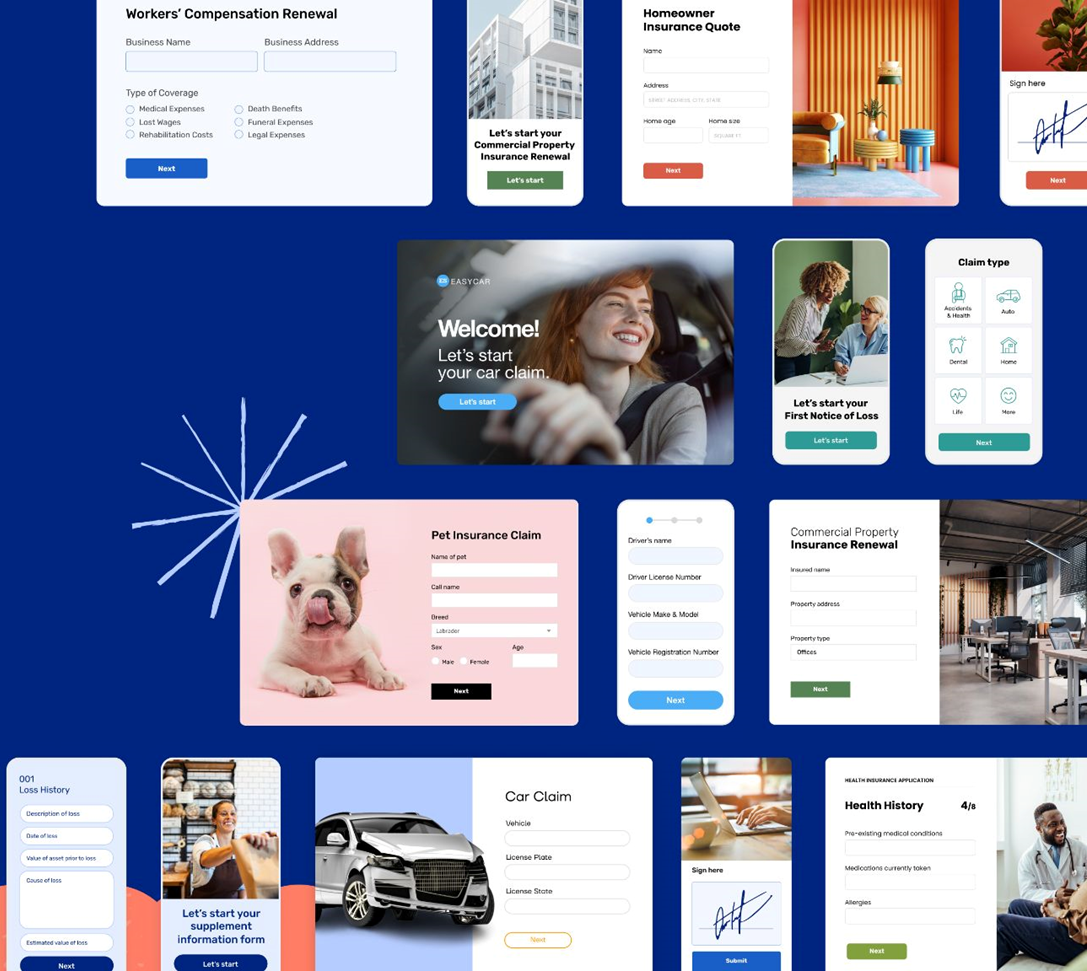- PDF
The Specification Process
- PDF
Article Overview
The following article describes what is a digital process, the concept of digitizing processes, and the specification process that will be implemented using the Workflow Manager.
What is a Digital Process?
A digital process is an online, interactive, web-based workflow designed to guide end-users through completing specific tasks or transactions efficiently. Digital processes replace traditional paper forms and manual procedures with a streamlined digital experience, allowing end-users to fill out important information, sign documents, make purchases, update personal details, and more - all from their devices.
Online digital processes simplify complex workflows for both organizations and their end-users. For example:
- In insurance:
- File claims
- Update policies
- Apply for new coverage
- In banking:
- Apply for loans
- Update account details
- Transfer funds
- Set Automated Clearing House (ACH) payments
- In IVF clinics:
- Securely provide medical history
- Schedule appointments
- Consent to procedures
- In airlines:
- Complete check-in
- Update travel details
- Report lost luggage
Digital processes are highly flexible and customizable, and ensure a seamless experience by adapting dynamically to the end-user’s inputs, making them efficient, secure, and user-friendly.

Figure 1: Digital Processes Example
Digitizing your Processes
Digital processes are composed of one or more Webflows. While Webflows can be created from scratch, they are often based on pre-existing processes (old online processes or manual PDF forms). These processes are digitized using the Builder platform. To ensure efficient digitization, it’s essential to analyze your current processes through a specification process.
What is the Specification Process?
The specification is a process that helps you fully understand your processes and how to digitize them into online digital experiences.
How to Start the Specification Process?
The specification process starts with asking different questions. It is recommended to organize the questions into groups. For example:
High-Level Questions:
- What is the name of the process?
- What is the goal of the process?
- What information is being collected during the process?
- What devices or platforms can the process be accessed on?
- What is the look and feel of the process?
End-Users Questions:
- Who are the roles that will interact with the processes?
- How do I communicate with the end-users?
- Do I need to send reminders?
- How do I implement compartmentalization between different end-users?
- Do I need to authenticate end-users?
- What is the process flow between all end-users? Who starts the process and who finishes it?
Workflow Questions:
- Where is the process initiated from? A single initiation channel or multiple channels?
- What happens to the collected data mid-process?
- Do I want it to integrate with one of my Core/CRM systems?
- Do I need to initiate integrations such as Webhooks?
- Does my process split into different paths according to end-users and roles?
- Are there any conditional workflows within the process?
- Are there decision-making steps in the process that affect the workflow?
- Are there APIs or other systems the workflow needs to communicate with?
- When does my process end?
Specification Process Example
A company asked you to create an online customer onboarding process based on an old PDF form. The customer will use the process to fill out personal information. If the customer is married, the process will have to reach the spouse so they can also provide information before final submission. Links to the process will be sent via email. When the process is submitted the provided information will be integrated into the company's database and will be displayed on top of the original PDF form.
Specification Questions And Answers
High-Level Questions:
Q: What is the name of the process?
A: Customer onboarding.
Q: What is the goal of the process?
A: Provide a quick and user-friendly onboarding process for new customers.
Q: What information is being collected during the process?
A: Personal information including ID pictures and signatures.
Q: What is the look and feel of the process?
A: Using the company's brand and logo.
End-Users Questions:
Q: Who are the roles that will interact with the processes?
A: The customer and a spouse (optional).
Q: How do I communicate with the end-users?
A: Emails. Each end-user will be informed about the progress of the process.
Q: How do I implement compartmentalization between different end-users?
A: By creating two different Webflows - one for the customer and one for the spouse.
Q: Do I need to authenticate end-users?
A: By using a One-Time Password (OTP).
Q: What is the process flow between all end-users? Who starts the process and who finishes it?
A: The customer starts the process, if a spouse is relevant they will continue and finish. If a spouse is not relevant, the customer will start and finish the process.
Workflow Questions:
Q: Where is the process initiated from? A single initiation channel or multiple channels?
A: Via a customer portal.
Q: What happens to the collected data?
A: The data will be presented on top of the original PDF and integrated into the company's database.
Q: Does my process split into different paths according to end-users and roles?
A: Yes. One path for a customer with a spouse and another for a customer without a spouse.
Q: When does my process end?
A: The process ends when the customer or the spouse (if relevant) submits it.
How to Implement The Specification Process?
The answers to the questions that were asked during the specification process are implemented by Using The Workflow Manager. The Workflow Manager helps you map, visualize, and configure all your digital processes from start to finish. For an implementation example, click here.

